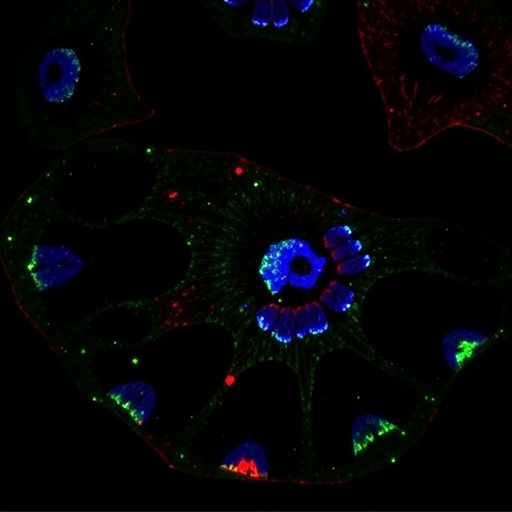In the quest to unravel the intricate neural codes that underlie behavior, one of the fundamental challenges is the ability to manipulate and monitor neural circuits with exquisite spatial and temporal precision. Traditional methods, including electrical stimulation and pharmacological interventions, have provided invaluable insights but suffer from limitations in selectivity and flexibility. Optical techniques, particularly those leveraging optogenetics, now stand at the forefront of neural circuit interrogation due to their capacity for controlling genetically defined cell populations with millisecond precision. However, despite tremendous progress, existing fiber-optic systems for optogenetic stimulation remain constrained by their inability to deliver light simultaneously or sequentially to multiple, spatially distributed targets within the brain. Conventionally, fibers illuminate fixed, discrete sites, significantly limiting the versatility and scale of neural control achievable in vivo.
Addressing this bottleneck, a groundbreaking innovation has emerged: the panoramically reconfigurable illuminative multicore fiber probe, or PRIME. This next-generation device epitomizes a paradigm shift in optical neural interface technology by integrating more than a thousand individually addressable light sources distributed both along the length and around the circumference of a single, slender optical fiber. Measuring merely 160 micrometers in diameter, this fiber houses an intricate arrangement of laser-fabricated grating light emitters situated at precise axial and radial coordinates along its length, spanning an impressive 5 millimeters of neural tissue and encompassing a full 360-degree illumination profile.
The core of PRIME’s transformative capability lies in its ingenious use of multicore fiber optics combined with advanced laser engineering techniques. Each core within the fiber channels input light to its corresponding grating emitter, which diffracts and projects light radially into the surrounding brain tissue. By modulating input light patterns at frequencies up to 60 Hz, researchers can dynamically reconfigure the spatial pattern of illumination across the entire array of 1,200 emission sites in near real time. This unprecedented degree of control allows selective, panoramic stimulation of neural circuits with an adaptability previously unattainable by any fiber-based optogenetic tool.
Critically, PRIME’s functionality transcends mere light delivery. The system seamlessly integrates with high-density electrophysiological recording technologies such as Neuropixels probes, enabling simultaneous and spatially precise optical stimulation alongside real-time neural activity recording. This dual functionality permits direct observation of the causal electrophysiological consequences of targeted optogenetic manipulation within complex circuits. The capacity to evoke and record neural responses from multiple, distinct locations along the probe in freely moving subjects represents a monumental leap toward deciphering the distributed code of brain-wide networks.
Experimental validation of PRIME was conducted in vivo within the superior colliculus of freely moving mice, a brain region integral to defensive behavioral responses. Researchers employed the device to selectively stimulate discrete depths and circumferential positions, observing the evocation of distinct defensive behaviors contingent on stimulation locus. These behavioral outcomes highlight PRIME’s ability not only to map functional microcircuits with fine spatial resolution but also to causally link activity within specific neuronal ensembles to overt, ethologically relevant behaviors. Such precise circuit-behavior coupling studies are vital for deeper mechanistic comprehension of brain function and dysfunction.
The scalability of the PRIME system is a particularly compelling attribute. Conventional optogenetic fibers and implantable probes localize illumination to only a handful of sites, often necessitating multiple implantations to cover large volumes. PRIME’s revolutionary design affords light access to an extensive neural volume from a single implant, drastically reducing tissue damage and surgical complexity while vastly expanding experimental agility. This is especially valuable for studying distributed circuits spanning cortical layers or multiple brain regions aligned along the fiber’s 5-millimeter illuminated length.
On the technological front, the engineering challenges overcome in fabricating PRIME are remarkable. Laser micromachining techniques were used to etch grating emitters with nanometer precision onto each core, carefully optimizing diffraction efficiency and beam shape for maximal neural tissue penetration and specificity. The fiber’s multicore architecture was meticulously designed to maintain independent light propagation while minimizing optical crosstalk. Input light pattern modulation is achieved via programmable optical components that direct laser light into selected fiber cores with minimal latency, enabling rapid switching between targeted sites multiple times per second.
Safety and biocompatibility considerations were integral to PRIME’s development. The small diameter and smooth outer surface reduce inflammatory response and mechanical damage upon implantation, crucial for chronic studies. Moreover, the fine control over illumination intensity and duration mitigates potential phototoxic and thermal effects on delicate neural tissue. This ensures that PRIME can be deployed for extended experiments, opening avenues for longitudinal studies of neural circuit dynamics underlying learning, memory, and disease progression.
PRIME’s revolutionary ability to dynamically scan, pattern, and distribute light across a three-dimensional neural landscape represents a milestone in neurotechnology. Its panoramic illumination capacity promises to unlock new frontiers in the functional mapping and modulation of distributed circuits that orchestrate cognition and behavior. By fusing ultrafast optogenetic control with concurrent electrophysiological monitoring, PRIME stands to transform our approach to probing the brain’s complexity, moving beyond static snapshots to fluid, interactive interrogation of neural ensembles.
Looking forward, the versatility of PRIME offers rich possibilities for integration with fluorescence imaging and calcium indicators, potentially enabling all-optical electrophysiology with unparalleled spatial resolution. The fiber’s design could also be adapted to accommodate multiple wavelengths, permitting multiplexed optogenetic experiments controlling different neural populations simultaneously. Additionally, PRIME’s technology holds promise beyond neuroscience, inspiring innovations in photomedicine and precise light delivery in challenging biomedical contexts.
In conclusion, the development of the laser-engineered PRIME fiber system represents a confluence of cutting-edge photonic engineering and neurotechnology, surmounting long-standing limitations of conventional fiber-optic probes. It enables unprecedented panoramic, reconfigurable illumination across extended neural volumes with high spatiotemporal resolution. This transformative tool empowers researchers to dynamically interrogate the distributed neural circuits governing behavior in unrestrained animals, offering a powerful new lens on the language of the brain and paving the way for future biomedical breakthroughs.
Subject of Research:
Neural circuit manipulation and recording through advanced optical fiber technology for in vivo optogenetic control.
Article Title:
Laser-engineered PRIME fiber for panoramic reconfigurable control of neural activity.
Article References:
Yang, S., Yang, K., Chevy, Q. et al. Laser-engineered PRIME fiber for panoramic reconfigurable control of neural activity. Nat Neurosci (2025). https://doi.org/10.1038/s41593-025-02106-x
Image Credits:
AI Generated
Tags: advancements in neuroscience researchchallenges in neural circuit interrogationlaser-engineered fiber technologymulticore fiber probe technologyneural circuit manipulation innovationsnext-generation optical devicesoptical neural interfacesoptical techniques for brain interrogationoptogenetics advancements in neurosciencepanoramic neural control techniquesprecision in neural monitoringspatially distributed neural stimulation





